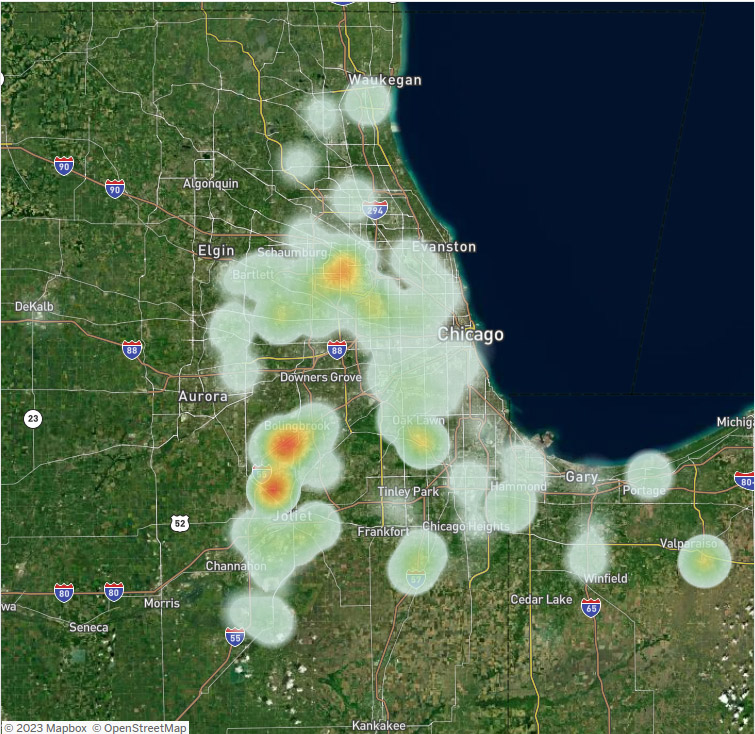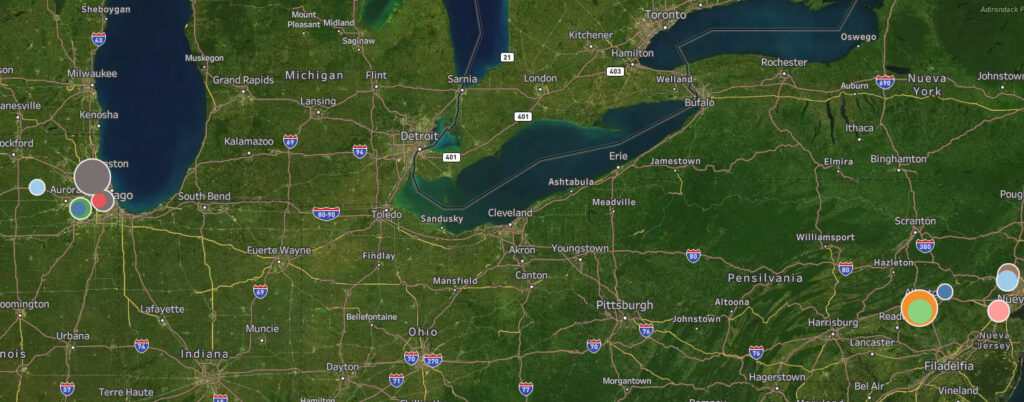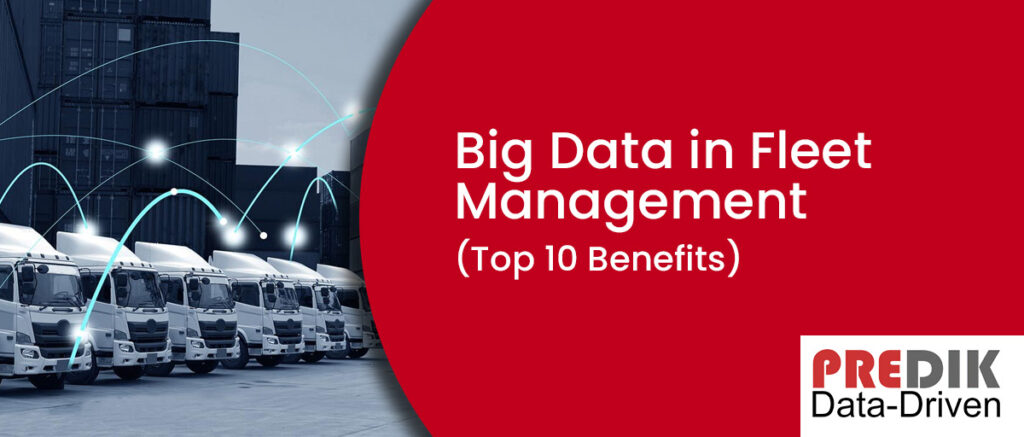Are manual fleet management practices causing you headaches? Want to streamline your operations, reduce expenses, and enhance driver safety? Then, Big Data technology can the right answer for you. Make informed decisions that improve your fleet’s efficiency and performance by processing vast amounts of data in real-time.
Big Data Analytics is changing how companies manage their fleets. It provides real-time insights about driver performance, fuel consumption, and vehicle utilization. With the help of advanced data, fleet managers can:
- Make informed decisions that optimize fleet operations.
- Reduce costs.
- Improve driver safety.
- And more.
In this article we will cover the following topics:
What is Fleet Management?

Fleet management involves systematically managing a company’s vehicles to cut the costs and risks associated with vehicle utilization.
“Fleet management is an administrative approach that allows companies to organize and coordinate work vehicles with the aim to improve efficiency, reduce costs, and provide compliance with government regulations.”
TechTarget
This process involves various tasks, such as vehicle acquisition, maintenance, driver management, and vehicle analysis. Effective fleet management is vital for companies with large fleets, helping to optimize operations, lower costs, and increase driver safety.
Today’s Challenges
As we said before, fleet management encompasses multiple tasks that can quickly become challenging and time-consuming. Fleet managers can face challenges like:
- Tracking vehicle maintenance schedules and costs
- Monitoring fuel consumption and usage
- Ensuring driver safety and compliance with regulations
- Managing vehicle utilization and performance
- Collecting, storing, and analyzing vast amounts of data
The Importance of Big Data in Fleet Management

Big Data revolutionizes how companies manage their fleets, providing real-time insights into driver performance, fuel consumption, and vehicle utilization.
Understanding the concept of Big Data: Big Data refers to the massive volume of structured data and unstructured data. All this data is generated by individuals, organizations, and machines.
Its imporant to say that it should include different types of data, from social media, financial transactions, sensor networks, and more. The term “Big Data” refers to the challenge for data scientists of handling and processing these large data sets.
Big Data Analytics have to main challenges: Their Scale and Complexity.
You can read: Our complete guide about Big Data
Advanced analytics allow companies to process this data and make informed decisions that boost the bottom line and optimize fleet operations. The massive volume of data generated by connected devices and social media allows fleet managers to access and analyze valuable information.
Also, Big Data enables fleet managers to monitor and analyze key metrics like driver performance and fleet maintenance.
“Big data analytics examines large amounts of data to uncover hidden patterns, correlations and other insights. With today’s technology, it’s possible to analyze your data and get answers from it almost immediately.”
SAS
How to leverage Fleet Management using Big Data?
Big Data offers plenty of opportunities for fleet management. It provides the information necessary to make informed driver performance, fuel consumption, and fleet maintenance decisions. This information can help fleet managers to optimize operations, improve driver safety, lower costs, and increase their bottom line.
Predictive Analytics
Predictive analytics play a critical role in the optimization of fleet operations. By analyzing historical data and identifying trends and patterns, predictive analytics can provide insights into areas that need improvement. All this process help fleet managers make informed decisions.
The term predictive analytics refers to the use of statistics and modeling techniques to make predictions about future outcomes and performance.
Investopedia
Another way to leverage Big Data in fleet management is by utilizing predictive analytics. Predictive analytics uses algorithms and machine learning models to analyze large amounts of data. This includes structured and unstructured data to predict future trends, events, and patterns.
In fleet management, predictive analytics can help identify potential issues. For example, prevent vehicle needing maintenance or a driver exhibiting dangerous driving behaviors.
Using the power of AI and Machine Learning
Another way to leverage Big Data in fleet management is through AI and machine learning. AI can automate many processes in fleet management, such as:
- Fuel management
- Maintenance planning
- Freeing up time and resources for fleet managers.
Additionally, AI can enhance decision-making by providing real-time insights into driving behaviors and patterns (Among other crucial metrics).
Machine Learning algorithms can be applied to the vast amounts of data collected by fleet management systems. Using the correct machine learning tools can provide valuable insights and predictions.
For example, Machine Learning algorithms can predict vehicle maintenance needs based on past performance, reducing downtime and increasing vehicle reliability. Machine learning can also improve vehicle usage, predict driver conducts, and improve driving protocols.
Understanding the concept of Machine Learning: Machine Learning is a subfield of Artificial Intelligence that enables computer systems to automatically improve their performance. It involves developing algorithms and models to analyze data, recognize patterns, and make predictions or decisions.
You can read: Our complete guide about Machine Learning
Integration with fleet management software
Big Data technology can integrate into a fleet management software. This integration can provide even more granular insights into fleet operations, helping drive more informed decisions.
This information can also help develop more effective maintenance schedules, for example.
Ten benefits of using Big Data in fleet management
So, what are the benefits of using Big Data in fleet management? Here are ten ways that Big Data can positively impact your fleet operations:
1. Improved Driver Safety
By monitoring driver behavior and performance, Big Data can improvement driving processes and reduce the risk of accidents.
2. Enhanced Fleet Maintenance
Predictive analytics helps plan maintenance based on real-time data. This can improves the overall health of a company´s fleet.
3. Increased Fuel Efficiency
Managers can use Big Data to optimize fuel consumption, reduce costs, and help cut expenses.
4. Better Decision-Making
Real-time insights from Big Data bring valuable insights. Fleet managers can make informed decisions about fleet operations, improving overall efficiency.
5. Lower Costs
By automating processes and reducing consumption, Data Analysis can help lower costs and improve operative bottom lines.
6. Improved Driver Performance
Big Data is not useful for driver security. Also, managers can monitor driver performance, provide them with valuable feedback and identify areas for improvement.
7. Enhanced Fleet Maintenance
Predictive analytics can detect potential maintenance issues before they occur. The result? It reduces downtime and improves the overall fleet’s health.
8. More Accurate Fuel Management
Big Data can be used to monitor fuel consumption, helping to optimize usage and reduce costs.
9. Increased Transparency
With real-time data, fleet managers can have greater visibility into fleet operations.
10. Improved Customer Satisfaction
Optimizing fleet operations can translate into a better customer satisfaction and increase brand loyalty.
In conclusion
In conclusion, using Big Data in fleet management is revolutionizing the industry. It provides fleet managers with the tools they need to optimize their operations and make informed decisions.
With the ability to analyze massive amounts of data in real-time, fleet managers can improve fuel management. They can also enhance driver safety, and reduce fleet expenses.




